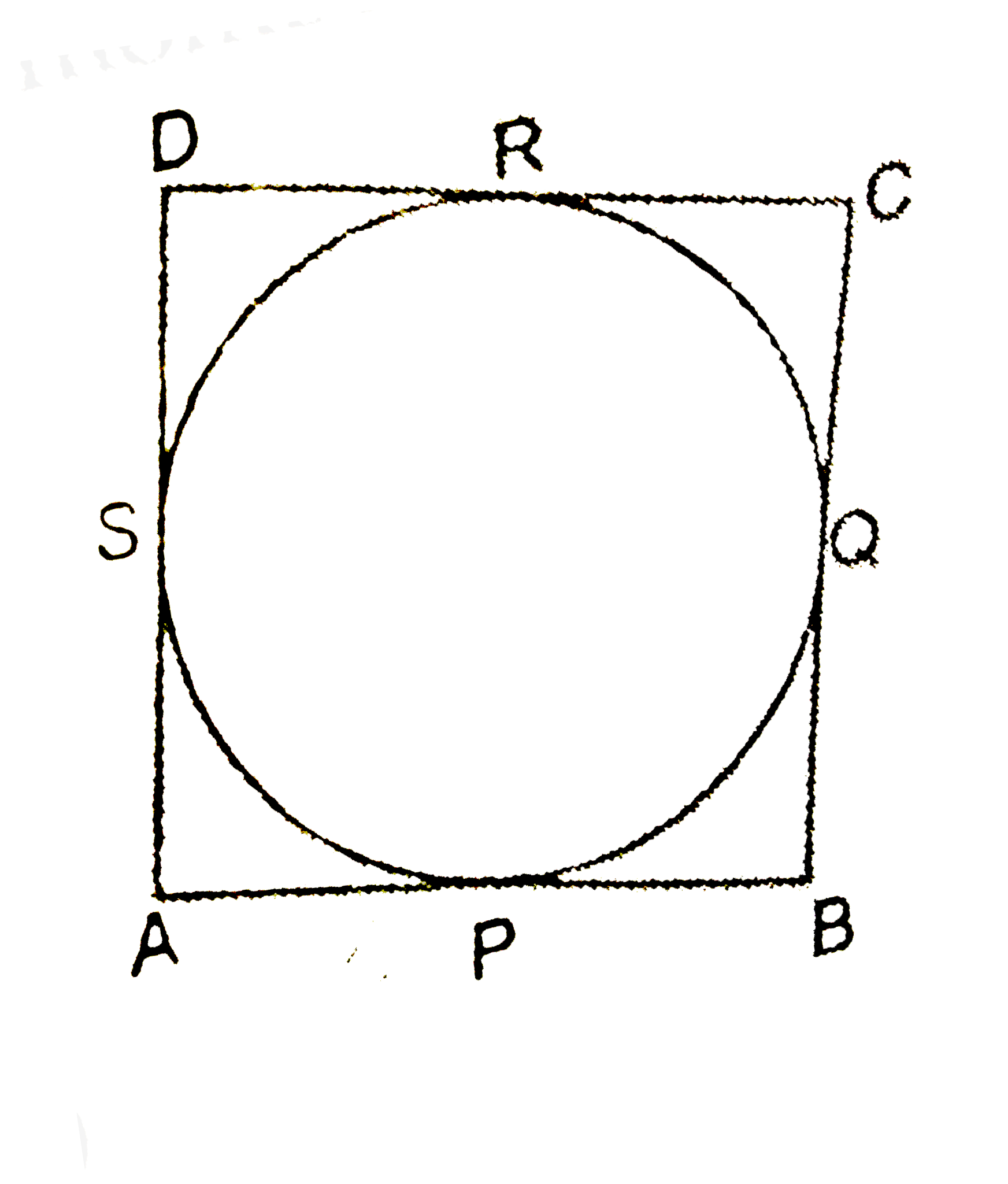Prove that the parallelogram circumscribing a circle is a rhombus.
To prove that a parallelogram circumscribing a circle is a rhombus, we will follow a step-by-step approach.
Step 1: Define the Parallelogram
Let ABCD be a parallelogram that circumscribes a circle. The points where the circle touches the sides of the parallelogram are denoted as P,Q,R,S on sides AB,BC,CD,DA respectively.
Step 2: Use the Tangent Properties
According to the properties of tangents from an external point to a circle, the lengths of the tangents drawn from a point outside the circle to the points of tangency are equal. Therefore, we have:
- AP=AS
- BP=BQ
- CQ=CR
- DS=DR
Step 3: Set the Lengths
Let:
- AP=AS=x
- BP=BQ=y
- CQ=CR=z
- DS=DR=w
Step 4: Express the Sides of the Parallelogram
Now we can express the lengths of the sides of the parallelogram:
- Side AB=AP+BP=x+y
- Side BC=BQ+CQ=y+z
- Side CD=CR+DR=z+w
- Side DA=DS+AS=w+x
Step 5: Set Up the Equations
Since ABCD is a parallelogram, we know that opposite sides are equal:
- AB=CD and AD=BC
From the expressions we have:
1. x+y=z+w (Equation 1)
2. w+x=y+z (Equation 2)
Step 6: Rearranging the Equations
From Equation 1:
- Rearranging gives us x−z=w−y (Equation 3)
From Equation 2:
- Rearranging gives us w−y=x−z (Equation 4)
Step 7: Conclude the Equality of Sides
From Equations 3 and 4, we see that:
- x−z=w−y
- Thus, we can conclude that x+y=z+w implies that all four segments x,y,z,w must be equal.
Step 8: Final Conclusion
Since AB=x+y, BC=y+z, CD=z+w, and DA=w+x are all equal, we conclude that:
- AB=BC=CD=DA
This means that the parallelogram ABCD has all four sides equal, which is the definition of a rhombus.
Final Statement
Therefore, we have proven that a parallelogram that circumscribes a circle is indeed a rhombus.
---
Let ABCD be a parallelogram that circumscribes a circle. The points where the circle touches the sides of the parallelogram are denoted as P,Q,R,S on sides AB,BC,CD,DA respectively.
According to the properties of tangents from an external point to a circle, the lengths of the tangents drawn from a point outside the circle to the points of tangency are equal. Therefore, we have:
- AP=AS
- BP=BQ
- CQ=CR
- DS=DR
Let:
- AP=AS=x
- BP=BQ=y
- CQ=CR=z
- DS=DR=w
Now we can express the lengths of the sides of the parallelogram:
- Side AB=AP+BP=x+y
- Side BC=BQ+CQ=y+z
- Side CD=CR+DR=z+w
- Side DA=DS+AS=w+x
Since ABCD is a parallelogram, we know that opposite sides are equal:
- AB=CD and AD=BC
1. x+y=z+w (Equation 1)
2. w+x=y+z (Equation 2)
From Equation 1:
- Rearranging gives us x−z=w−y (Equation 3)
- Rearranging gives us w−y=x−z (Equation 4)
From Equations 3 and 4, we see that:
- x−z=w−y
- Thus, we can conclude that x+y=z+w implies that all four segments x,y,z,w must be equal.
Since AB=x+y, BC=y+z, CD=z+w, and DA=w+x are all equal, we conclude that:
- AB=BC=CD=DA
Therefore, we have proven that a parallelogram that circumscribes a circle is indeed a rhombus.
Topper's Solved these Questions
- BOOK - NCERTCHAPTER - CIRCLESEXERCISE - Exercise 10.12videos
CIRCLES
- BOOK - NCERTCHAPTER - CIRCLESEXERCISE - SOLVED EXAMPLES3videos
CIRCLES
- BOOK - NCERTCHAPTER - ARITHMETIC PROGRESSIONSEXERCISE - Exercise 5.320videos
ARITHMETIC PROGRESSIONS
- BOOK - NCERTCHAPTER - CONSTRUCTIONSEXERCISE - EXERCISE 11.27videos
CONSTRUCTIONS
Similar Questions
Knowledge Check
- Question 1 - Select One
Assertion(A) If two tangents are drawn to a circle from an external point then they subtend equal angles at the centre.
Reason (R ) A parallelogram circumscribing a circle is a rhombusABoth Assertion (A) and Reason (R ) are true and Reason (R ) is a correct explanation of Asseration (A).BBoth Assertion (A) and Reason (R ) are true but Reason (R ) is not a correct explanation of Asseration (A).CAssertion(A) is true and Reason (R ) is false.DAssertion(A) is false and Reason (R ) is true.
If a parallelogram circumscribes a circle then prove that it must be a rhombus.
 View Solution
View SolutionProve that opposite sides of a quadrilateral circumscribing a circle subtend supplementary angles at the centre of the circle.
View SolutionProve that opposite sides of a quadrilateral circumscribing a circle, subtend supplementary angles at the centre of a circle.
View SolutionProve that opposite sides of a quadrilateral circumscribing a circle subtend supplementary angles at the centre of the circle.
View SolutionProve that the centre of the circle circumscribing the cyclic rectangle ABCD is the point of intersection of its diagonals.
View SolutionThe perimeter (in cm) of a square circumscribing a circle of radius a cm,
View SolutionRhombus a parallelogram having all sides equal is called a rhombus.
View Solution

